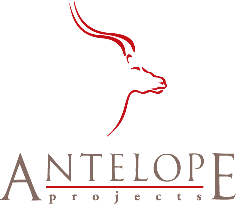
 |
collaborationveryard projects > component-based-business > collaboration |
| we offer | our approach | on this page | links | ||||||
| consultancy - planning
for collaboration
presentations |
Our consultancy practice focuses on identifying and implementing
successful and sound collaborations between participating businesses.
Similar questions apply to Joined-Up
Government.
|
principles |
 |
Principles of Collaborationveryard projects > component-based-business > collaboration > principles |
| 1 | Business collaboration means autonomous business entities working together to achieve some business goals. |
| 2 | Technical support for collaboration is provided in a number of areas:
|
| 3 | Collaboration often takes place without a formal agreement or collaboration framework. We call this De Facto collaboration. Such informal or adhoc collaboration can sometimes work very well - but it can also prove unreliable or unstable. |
 |
Challenges of Collaborationveryard projects > component-based-business > collaboration > challenges |
| 1 | Taking the Initiative | Even when all the parties can see the benefits of a potential collaboration,
it is sometimes difficult to make the first move.
It's particularly difficult (but sometimes necessary) to make One-Sided Commitments. |
| 2 | Trust and Security | See Veryard Projects Trust Page
See also
|
 |
Two Approachesveryard projects > component-based-business > collaboration > 2 approaches |
A homogeneous closed group is a stable network based on informal commitments (trust).
In some situations, responsibility can be shared by creating a stable group or team.
The members of the group identify with the group. This has two aspects:
A heterogeneous open group is a dynamic network based on formal commitments (contract)In situations where stable teams cannot develop (or be built), formal structures of individual duties need to be established, to enable responsibilities to be shared.
This tends to be necessary under the following conditions:
 |
Requirements for collaborationveryard projects > component-based-business > collaboration > requirements |
| 1 | Planning for
Collaboration |
Many large and complex schemes today are characterized by:
|
| 2 | Knowledge
Management |
Collaborations typically involve shared information and knowledge.
Perhaps confidential documents are shown to your business partners, under
some Non-Disclosure Agreement. Or perhaps your partners have access
(direct or indirect) to your customer database.
Knowledge management needs to be an explicit part of the collaboration. The most critical knowledge may be that concerning the management of the collaboration itself - for example commercial or security arrangements. |
| 3 | Risk
Management |
Agreement on the nature and scale of the business and technical risks
facing the collaboration.
Agreement on the ownership and responsibility for these risks. |
| 4 | Crisis
Management |
Dealing rapidly and effectively with unforeseen problems. Many business collaborations operate just fine on the routine stuff, but fall apart when anything goes wrong. |
 |
Binding and commitmentveryard projects > component-based-business > collaboration > binding & commitment |
 |
Internet resources: Collaborationveryard projects > component-based-business > collaboration > internet resources |
| Collaborative Business | Article from Information Week - May 7th, 2001
Some useful sidebars. |
|
| Reality and Perception | Article from Wall Street Journal - May 21st, 2001 |
![]()
 |
Recommended reading: Collaborationveryard projects > component-based-business > collaboration > recommended reading |
| book | comment | availability |
| Richard Veryard, Component-Based Business: Plug and Play Springer, 2001. | details |
|
| Desmond D'Souza & Alan Cameron Wills, Objects, Components and Frameworks with UML: The Catalysis Approach Addison-Wesley, 1999 | The best account of collaborations and collaboration frameworks from a software engineering perspective. Essential reading for object technology and software componentry. | |
| Geoff Mulgan Connexity Chatto & Windus 1997. | Mulgan is one of the political brains behind New Labour.
Much of the technical content will now be familiar to followers of internet fashion, but the social and political implications are particularly interesting because of the behind-scenes influence he apparently wields over the UK Government |
|

|

 |